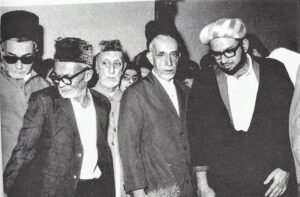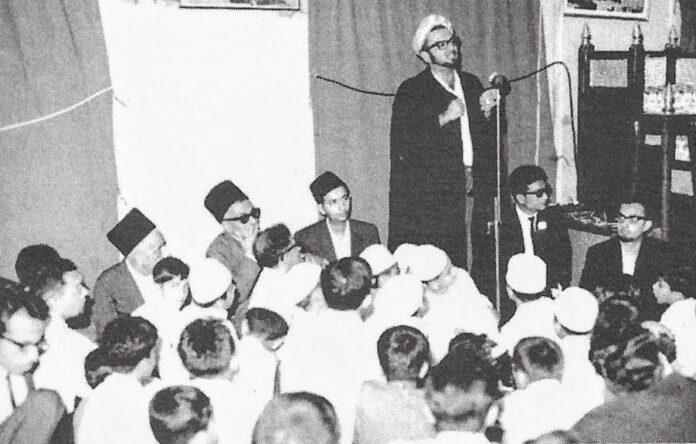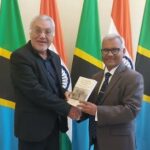At a time when “unity” and working together are a priority for the global Khoja community, it is encouraging to reflect on a pivotal achievement by Mulla Asghar in Africa.
The following is an excerpt from the book Relentless Endeavours – Reflections on Mulla Asgharali M M Jaffer (1936-2000) by Hassan Ali M Jaffer.
It tells of the “excitement and joy” on a “one of the happiest days” in a Jamaat’s history.
Published ten years ago, the book still has useful lessons for all communities today.
Excerpt:
An energetic unifier
Of the many causes he participated in, Mulla Asghar will always be fondly remembered for the energetic role he played in unifying the two Mombasa Jamaats that had split over a difference of opinion.
The first Khoja Shia Ithna-Asheri Jamaat was established in Zanzibar in 1880. Zanzibar was the entry point for migrants from India into East Africa. From here, pockets of the community moved to settle in Mombasa and Lamu on the Kenyan coast and in Merca on the Somali coast. Later, families moved further from Merca to Mogadishu and Brava, while others went towards Bagamoyo, Dar es Salaam, Kilwa and Lindi in southern Tanganyika.
It is interesting to note here that Zanzibar was an independent Sultanate under the British Protectorate. Tanganyika was at this time a German colony, while Kenya was a British one. The ten-mile wide Kenyan coastal strip was technically treated as part of the Zanzibar Protectorate.
On the Kenyan coast, the first Khoja Shia Ithna-Asheri mosque and Imambara were built in Mombasa in 1899. Until then, members of the community would operate as a jamaat on ad-hoc basis performing their collective religious practices in private homes.
Misconception leads to schism
In 1896, a dispute arose in Zanzibar over the interpretation of certain beliefs, in what was then dubbed as the issue of ‘musawat’(the belief in equality of status of the Holy Prophet (s) and Imam Ali (a). This misconception was later corrected by Ulema). This formed a schism which led to the creation of a second Khoja Shia Ithna-Asheri Jamaat.
Accordingly, in 1904 a second mosque and Imambara were built for the purpose of accommodating this faction. The dispute in Zanzibar had a ripple effect spilling over to Mombasa and a second jamaat was also formed there.
Despite Mombasa having two jamaats with two adjoining mosques and Imambaras (and also two graveyards), there was much harmony in both sections – unlike in Zanzibar. Here, the two parties worked together under the aegis of what was then known as the ‘joint Jamaat”.
With the passage of time, the community felt that there was a need to dissolve the individual identities of the two distinct, separately registered jamaats and unify the management of all Trusts and Waqf properties under a newly constituted single Jamaat. The idea received wide acceptance from community members and was eventually brought into fruition in 1966.

Tireless work for unification
Mulla Asghar played an active role in collecting a consensus for this move. With Late Haji Gulamabbas Kassamali, Haji Mohamedali Meghji, Haji Abdullah Jaffer Dewji, Haji Abdulrasul Dharamsi Khataw, Haji Sadak Jivraj Meghji, Haji Mohamedali Dhala and Haji Mohamedraza Abdullah Kanji, he worked tirelessly towards the unification.
27th October, 1966 coincided with 13th Rajab, 1386 A.H. and went down as one of the happiest days in the history of Mombasa Jamaat. The Islamic date marks the birth of Imam Ali (a) and is observed with much festivity in the Shia world. It was therefore highly auspicious that the unification of the Mombasa jamaats take place on its eve.
Golden turban
For the wiladat night, a youthful Mulla put on an ‘aba and the traditional Khoja golden turban donned by elders on festive occasions. With an Indian shawl resting on his shoulders – something he had never worn before – he ascended the mimber to recite the maulud.
Haji Mohamedali Meghji, then Chairman of the Africa Federation, was resplendent too. He also came with the traditional golden turban and a sherwani, instead of his usual long coat.
Note:
Use of the traditional golden turban is now out of fashion among Khoja community members in Africa. It, however, continues to be occasionally used in India and Pakistan. Individuals holding positions of eminence among the Ismaili Khoja known as Varas, Mukhi and Kamadiya also continue to wear such turbans on special occasions. Such golden turbans are still commonly used by many members of the Dawoodi Bohra community in East Africa.
Excitement and joy
In his capacity as an elder of the Mombasa Jamaat and President of the Federation of the Khoja Shia Ithna-Asheri Jamaats of Africa, Mohamedali bhai made the historic announcement and awarded Huseini Medals to three elders: Haji Abdullah Jaffer Dewji, Haji Abdulhusein Dharamsi Khataw and Haji Sadak Jivraj Meghji. The atmosphere of excitement and joy prevalent on the occasion was something that those present would cherish all their lives.
Sajjad Rashid recalls: “It might be interesting for those who do not know, that Mulla Saheb – in his capacity as Chairman of the Bustani Jamaat – wrote the first official communication to the Kuwwatul Islam Jamaat on the subject of the unification of (the) two jamaats in Mombasa.”
In the ensuing general election of the new jamaat, Haji Mohamedali Dhalla Ismail was elected its first Chairman.
Source: From the book Relentless Endeavours – Reflections on Mulla Asgharali M M Jaffer (1936-2000) by Hassan Ali M Jaffer (2009) p.76-79













